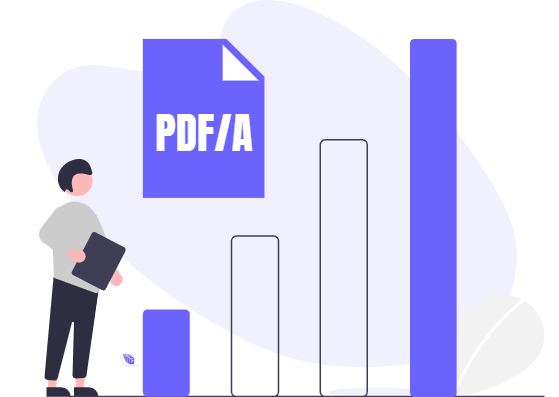What are the different conformance levels of PDF/A?
PDF/A-1 supports conformance levels a and b, while PDF/A-2 and -3 support conformance levels a, b, and u.
These conformance levels regulate a file’s “accessibility” criteria, which affect how easy it is for both computers and humans to grasp the content.
Below we can understand more of each conformance level;
- Level b (Basic) – PDF/A-1b, PDF/A-2b, PDF/A-3b
The B-level conformance standard is the most straightforward to satisfy since it only requires that documents adhere to suggestions for reliable viewing. - Level a (Accessible) – PDF/A-1a, PDF/A-2a, PDF/A-3a
A superset of b-level conformance is “accessible” conformance. In order to maintain a document’s logical structure, semantic content, and natural reading order, it adds requirements for information. This refers to that a-level compliance not only guarantees that documents will continue to look the same in the future, but also makes its content easier for machines and people to interpret and reuse. A legitimate PDF/A will feature material that is more readable by screen readers for the blind to be reliably searched and copied. - Level u (Unicode) – PDF/A-2u, PDF/A-3u
Similar to “level a,” character mapping to Unicode is necessary for u-level conformity. However, it eliminates section 6.7 of ISO 19005-2’s requirements for embedded logical structure (i.e., tags and a structure tree) at the a-level (PDF 1.7). The content in a PDF/A that satisfies u-level conformance can thus be safely searched for and copied, but the reading order is not ensured.
How to turn a PDF into a PDF/A?
There are many PDF to PDF/A converters on the market, but you should use “any kind” of the converter as your online security is also at stake. Therefore, we advise utilizing the VP Online PDF Converter, which is a great converter that offers speedy conversion of your PDF into a variety of formats, including PDF/A. You may quickly and easily convert PDF to PDF/A with VP Online Editor.


